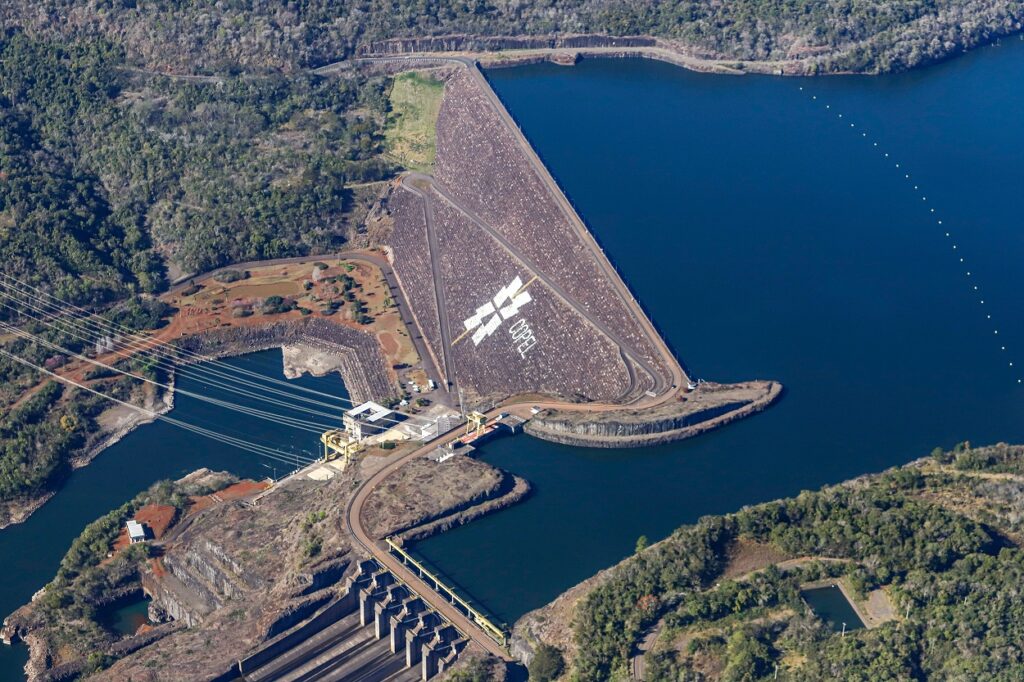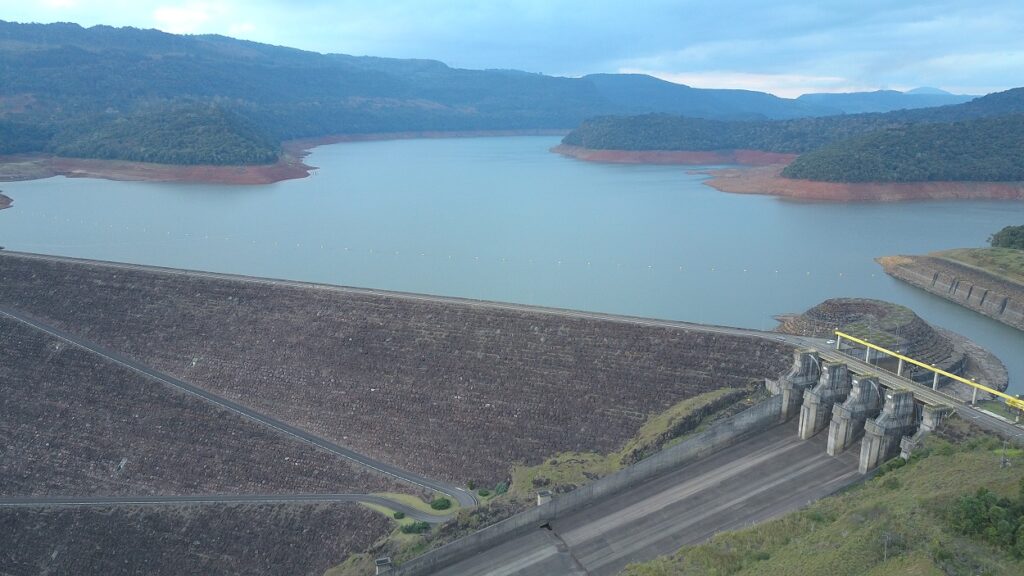Reservoirs

The largest volume of water used by Copel is intended to generate energy. The Company has investments in 26 hydroelectric plants, 24 of which are in the State of Paraná, one in the State of Rio Grande do Sul and one in the State of Mato Grosso. The hydrographic basins with projects operated by Copel are Iguaçu, Tibagi, Alto Ribeira, Atlântico Sudeste and Amazônica.
The water is accumulated in reservoirs for later passage through the turbines and consequent generation of energy, being returned at a point downstream (downstream) by the plant. Thus, the predominant use of water is non-consumptive. The capacity to regulate the flow of reservoirs is the means of guaranteeing water for use in periods of low availability.
To take care of water resources, Copel has specific areas, which remain attentive to the challenges posed by climate change. The Water Resources Management Division (VRHI) was created at Copel in the 1980s, when the need arose to perform water balance calculations for operational decision making in the Company’s main reservoir, Foz do Areia. At that time, calculations were performed daily, manually, to establish spills and drops in the water level of the reservoir. This ‘know-how’, built in the past, served as the basis for the development of specific and automatic software used by VRHI today, with a large participation of the Information Technology area.
Real-time operation
Copel has a monitoring network of more than 60 hydrometric stations for water level measurement (in rivers and reservoirs) and more than 100 for measuring rainfall, located in all hydrographic basins where it has hydroelectric plants, in addition to monitoring the amount of water stored in their reservoirs. This volume of data and information makes it possible to make strategic decisions in the operating routines, in addition to supporting the work of the project and execution teams, dam safety, generation planning and programming, energy commercialization, in addition to helping state and national water management. Monitoring of the hydrological situation in real time and of the meteorological conditions is also carried out, as well as the results of meteorological models that simulate future conditions.
From the assimilation of field data that arrive every hour from the telemetry network, and the data of physical representation of the characteristics of each plant and reservoir, they are made available to the real-time operation of the Generation and Transmission Operations Center (COGT ) tools for better management of the company’s hydraulic generation park projects.
As this information can be important for society and for the public administration, the processed data is also made available at this address.
With a volume of around 11,520 automatic data collected per day, Copel maintains historical information on the hydrographic basins of interest, in some cases the historical series goes back to 1931.
One of VRHI’s most important actions is the development of rules for the operation of reservoirs, considering the need for good interaction with other users of water resources in each river basin. When possible, this planning and management work can even provide better conditions than would naturally occur – such as severe droughts or floods.
The hydraulic operation of the reservoirs follows rules and instructions established according to the characteristics and specificities of each project (such as generation capacity, spillage, operational levels of the reservoir) and the hydrographic basin where it is inserted (backwater, natural rates of flow variation, maximum and minimum flows occurred, among others).
In addition, specific studies are carried out that include monitoring prior to the installation of the enterprise and field inspections to characterize the main users and restriction flows.
In addition to office activities, the VRHI team works in the field in the inspection of contracts for the provision of conventional and telemetric hydrological monitoring services, in addition to carrying out bathymetry, topographies and flow measurements with specific equipment.
The use of the hydraulic potential of the plants maintained and operated by Copel is also preceded by the Granting of the Right to Use Water Resources, an instrument of the National Water Resources Policy (LAW No. quantitative and qualitative control of water uses and the effective exercise of access rights to water.
The operating rules are registered with the National Electric System Operator (ONS) and can be incorporated into the Grant of Right to Use Water Resources, if it is of interest to the water resources management body, at the federal or state level.
In the reservoir operation routines, the Company estimates the availability of water. With regard to energy planning, Copel analyzes conjunctural water availability scenarios (historical variation) for the purposes of energy planning, revenue estimation (MRE generation, short-term prices) and associated risks.
Copel has emergency action plans for the dams of its hydropower projects, which define the actions to be carried out in a situation of anomaly, identifying preventive and corrective procedures, strategy and means of dissemination and alert for the affected communities and the agents that must be mobilized.
The result of the hydraulic operation of each project operated by Copel is available in real time on the Copel Geração website.
As an additional protection measure for the reservoirs, Copel periodically inspects its reservoirs, evaluating possible environmental interventions in the lakes and their surroundings, and defining specific measures to remedy identified irregularities such as construction in the concession area, discharge of effluents, use and occupation of Permanent Protection Areas (APP), illegal hunting and fishing, among others.

Financial Compensation for the Use of Water Resources
The Financial Compensation for the Use of Water Resources (CFURH) for the purpose of generating electric energy benefits the States, the Federal District and the Municipalities in which the installations for the production of electric energy are located – or that have areas occupied by water from the respective reservoirs – and also bodies of the direct administration of the Union.
Copel, as the main power generator in Paraná, contributes with more resources to the development of the State and the Country through the payment of CFURH. With the payment of amounts related to charging for the use of water resources, Copel also contributes to the implementation of the National Water Resources Policy and the National Water Resources Management System.
The percentages of the distribution of the financial compensation (6.25% remaining) were defined in Law No. 8,001/1990, later amended by Law No. 13,661/2018, are distributed as follows:
States 25%
Municipalities 65%
MDR – Ministry of Regional Development 3%
MME – Ministry of Mines and Energy 3%
FNDCT – National Fund for Scientific and Technological Development 4%
Over the last 10 years, Copel paid more than R$ 1 billion Reais* as Financial Compensation for the Use of Water Resources. Part of these resources benefit 34 municipalities directly affected by the plants’ reservoirs, in addition to the states of Paraná, Santa Catarina and Mato Grosso.
*Including the Governador Jayme Canet Junior plant, in which Copel holds a 51% stake.
As a charge for the use of water resources (0.75% share), in the period 2012 to 2021, more than BRL 100 million were transferred.



